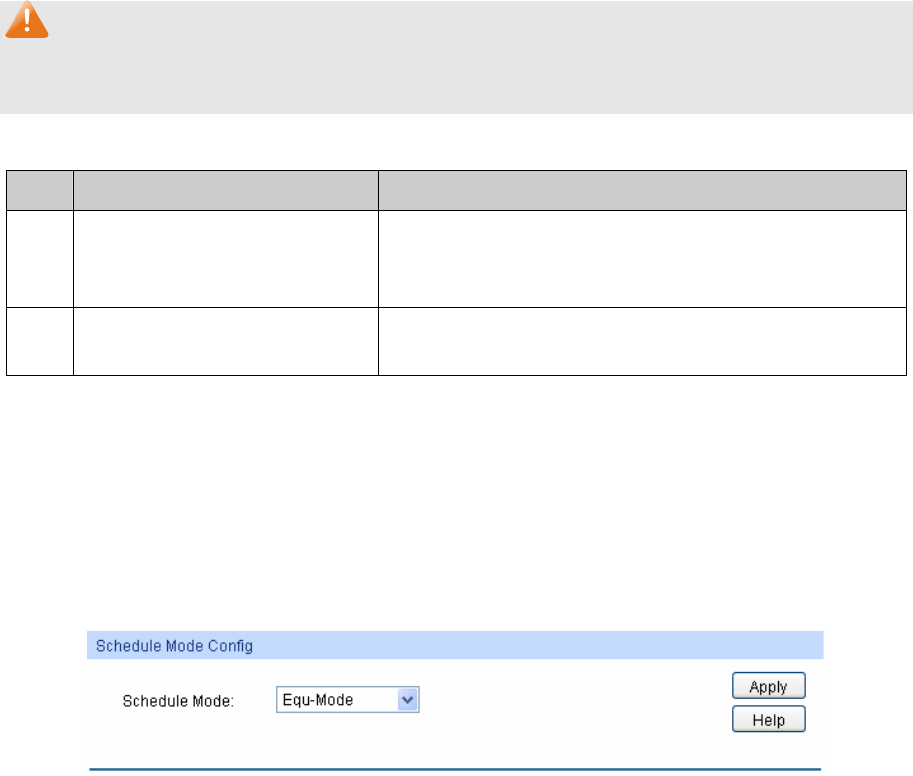
The followin
g entries are displayed on this screen:
802.1P Priority Config
802.1P Priority: Enable/Disable 802.1P Priority.
Priority and CoS-mapping Config
Tag-id/Cos-id: Indicates the precedence level defined by IEEE802.1P and the
CoS ID.
Queue TC-id: Indicates the priority level of egress queue the packets with tag
and CoS-id are mapped to. The priority levels of egress queue are
labeled as TC0, TC1, TC2 and TC3. By default, the mapping
relation between tag/cos and the egress queue is: 0-TC1,
1-TC0, 2-TC0, 3-TC1, 4-TC2, 5-TC2, 6-TC3, 7-TC3.
Note:
To complete QoS function configuration, you have to go to the Schedule Mode page to select a
schedule mode after the configuration is finished on this page.
Configuration Procedure:
Step Operation Description
1 Configure the mapping
relation between the 802.1P
priority Tag/CoS and the TC
Required. On QoS→DiffServ→802.1P/CoS mapping
page, configure the mapping relation between the
802.1P priority Tag/CoS and the TC.
2 Select a schedule mode Required. On QoS→DiffServ→Schedule Mode
page,, select a schedule mode.
10.1.4 Schedule Mode
On this page you can select a schedule mode for the switch. When the network is congested, the
problem that many packets compete for resources must be solved, usually in the way of queue
scheduling. The switch will control the forwarding sequence of the packets according to the priority
queues and scheduling algorithms you set. On this switch, the priority levels are labeled as TC0,
TC1…TC3.
Choose the menu QoS→DiffServ→Schedule Mode to load the following page.
Figure 10-9 Schedule Mode
The following entries are displayed on this screen:
Schedule Mode Config
SP-Mode: Strict-Priority Mode. In this mode, the queue with higher priority
will occupy the whole bandwidth. Packets in the queue with lower
priority are sent only when the queue with higher priority is empty.
165


















